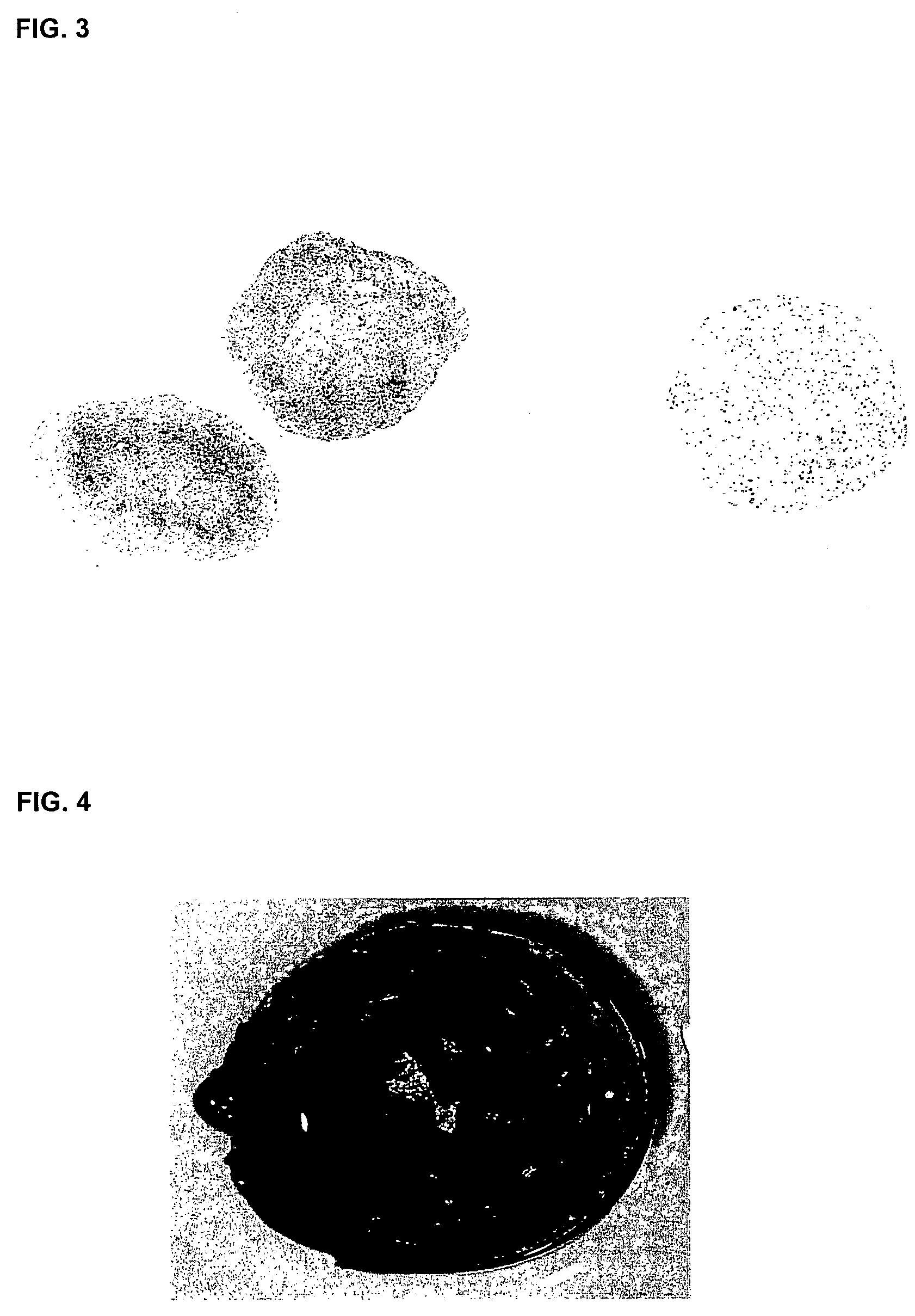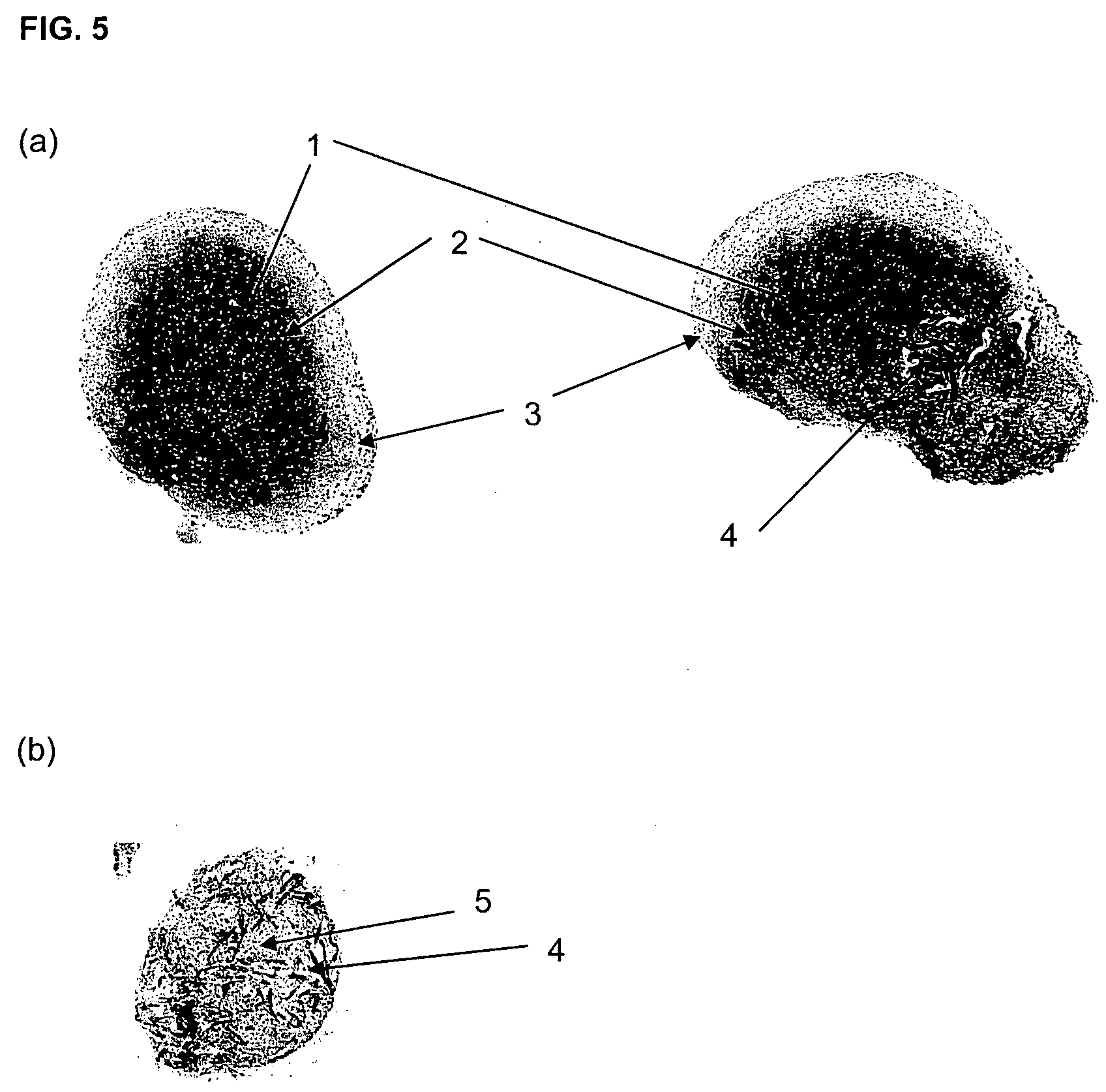Scaffolds
a technology of scaffolds and stents, applied in the field of tissue culture, can solve the problems of serious physical deformity and debilitation, limited repair ability of vascular tissue, and approach with significant drawbacks, and achieve the effect of enhancing mechanical strength and protection
- Summary
- Abstract
- Description
- Claims
- Application Information
AI Technical Summary
Benefits of technology
Problems solved by technology
Method used
Image
Examples
example 1
Primary Scaffolds Seeded with Ovine Bone Marrow Stem Cells
Step 1: Preparation of Primary Scaffolds
[0104]Polyglycolic acid (PGA) non-woven felt is reinforced with poly(L-lactide-co-glycolic acid (PLLGA) by dipping the felt in a solution of PLLGA and dried. Discs of between about 0.5 mm×1 mm in diameter and between about 0.5-3 mm in depth were punched out.
[0105]The discs were sterilised with a 70:20:10 solution of ethanol:acetone:water, and then incubated in a 50:50 solution of foetal calf serum (FCS) and phosphate buffered saline (PBS) for 2 hours at room temperature to coat the felts with FCS components that aide cell adhesion.
Step 2: Seeding Cells onto Primary Scaffolds
[0106]Ovine bone marrow stem cells were seeded onto 45 primary scaffolds at cell number of about 250,000 cells / scaffold. The primary scaffolds were seeded in a falcon tube in a total volume of 5 ml α MEM media containing 10% HIFCS, 2 mM L-glutamine, 1% non-essential amino acids, 100 IU / ml penicillin, 100 μg / ml strept...
example 2
Primary Scaffolds Seeded with Adult Human Bone Marrow Stem Cells
Step 1: Preparation of Primary Scaffolds
[0110]Polyglycolic acid (PGA) non-woven felt is reinforced with poly(L lactide-co-glycolic acid (PLLGA) by dipping the felt in a solution of PLLGA and dried. Discs of between about 0.5 mm×1 mm in diameter and between about 0.5-3 mm depth were punched out.
[0111]The discs were sterilised with a 70:20:10 solution of ethanol:acetone:water, and then incubated in a 50:50 solution of FCS and PBS for 2 hours at room temperature to coat the felts with FCS components that aide cell adhesion.
Step 2: Seeding Cells onto Primary Scaffolds
[0112]Adult human bone marrow stem cells were resurrected and grown in 2D culture until 90% confluent. The cells were detached from the flask using a trypsin (0.05% w / v) and EDTA (0.02% w / v) solution and then α-MEM media containing 10% FCS was added to the cell suspension to neutralize the activity of trypsin. The cells were counted and the volume adjusted to g...
example 3
Primary Scaffolds Seeded with Adult Ovine Chondrocytes
Step 1: Preparation of Primary Scaffolds
[0122]Polyglycolic acid (PGA) non-woven felt is reinforced with poly(L-lactide-co-glycolic acid (PLLGA) by dipping the felt in a solution of PLLGA and dried. Discs of between about 0.5 mm×1 mm in diameter and between about 0.5-3 mm depth were punched out.
[0123]The discs were sterilised with a 70:20:10 solution of ethanol:acetone:water, and then incubated in a 50:50 solution of FCS and PBS for 2 hours at room temperature to coat the felts with FCS components that aide cell adhesion.
Step 2: Seeding Cells onto Primary Scaffolds
[0124]Adult ovine chondrocytes were resurrected and grown in 2D culture until 90% confluent. The cells were detached from the flask using a trypsin (0.05% w / v) and EDTA (0.02% w / v) solution and then α-MEM media containing 10% FCS was added to the cell suspension to neutralize the activity of trypsin. The cells were counted and the volume adjusted to give a concentration ...
PUM
 Login to View More
Login to View More Abstract
Description
Claims
Application Information
 Login to View More
Login to View More - R&D
- Intellectual Property
- Life Sciences
- Materials
- Tech Scout
- Unparalleled Data Quality
- Higher Quality Content
- 60% Fewer Hallucinations
Browse by: Latest US Patents, China's latest patents, Technical Efficacy Thesaurus, Application Domain, Technology Topic, Popular Technical Reports.
© 2025 PatSnap. All rights reserved.Legal|Privacy policy|Modern Slavery Act Transparency Statement|Sitemap|About US| Contact US: help@patsnap.com



